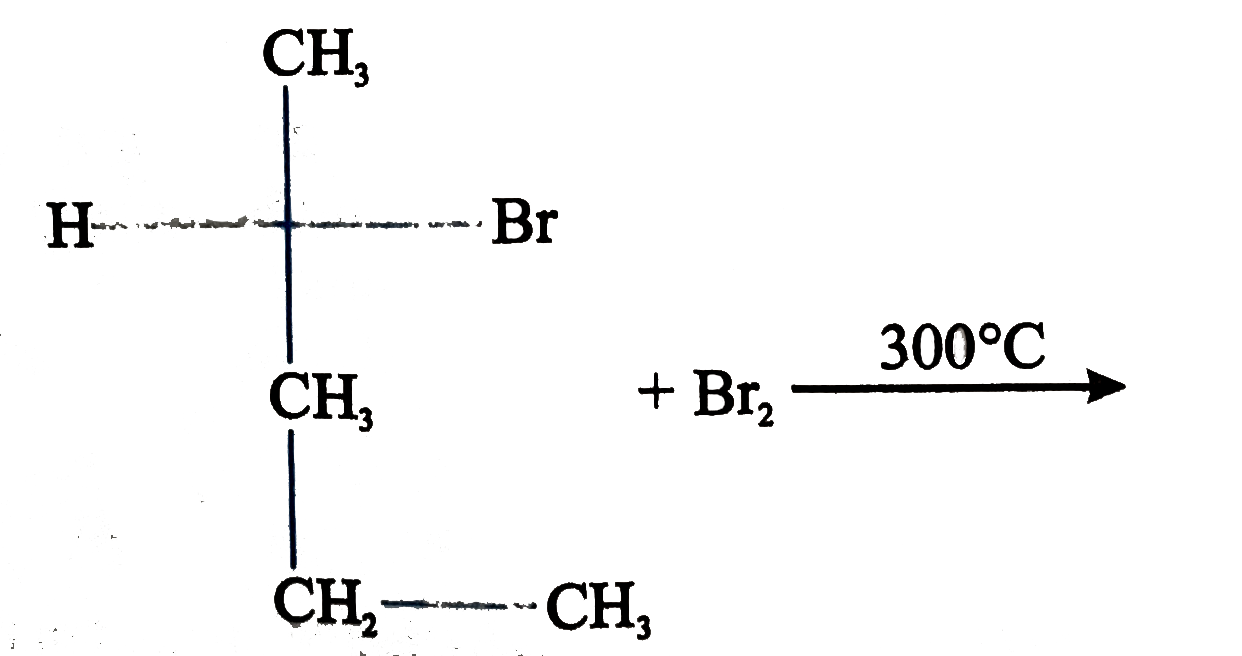Chloroethane is treated with alcoholic caustic potash ? Give another method by which the hydrocarbon obtained in the above reaction be prepared
To solve the question, we need to analyze the reaction of chloroethane with alcoholic caustic potash and identify the hydrocarbon produced. Then, we will suggest another method to prepare the same hydrocarbon.
1. Identify the Reaction:
Chloroethane (C2H5Cl) reacts with alcoholic caustic potash (KOH in alcohol) to undergo dehydrohalogenation. This reaction leads to the formation of ethyne (C2H2).
Reaction:
C2H5Cl+KOH(alc)→C2H2+KCl+H2O
2. Determine the Hydrocarbon:
The hydrocarbon obtained from the above reaction is ethyne (C2H2), which is an alkyne.
3. Suggest Another Method to Prepare Ethyne:
Another method to prepare ethyne is through the reaction of calcium carbide (CaC2) with water. When calcium carbide reacts with water, it produces ethyne and calcium hydroxide.
Reaction:
CaC2+2H2O→C2H2+Ca(OH)2
4. Conclusion:
Therefore, the hydrocarbon obtained from the reaction of chloroethane with alcoholic caustic potash is ethyne (C2H2), and another method to prepare ethyne is by reacting calcium carbide with water.
Chloroethane (C2H5Cl) reacts with alcoholic caustic potash (KOH in alcohol) to undergo dehydrohalogenation. This reaction leads to the formation of ethyne (C2H2).
C2H5Cl+KOH(alc)→C2H2+KCl+H2O
The hydrocarbon obtained from the above reaction is ethyne (C2H2), which is an alkyne.
Another method to prepare ethyne is through the reaction of calcium carbide (CaC2) with water. When calcium carbide reacts with water, it produces ethyne and calcium hydroxide.
CaC2+2H2O→C2H2+Ca(OH)2
Therefore, the hydrocarbon obtained from the reaction of chloroethane with alcoholic caustic potash is ethyne (C2H2), and another method to prepare ethyne is by reacting calcium carbide with water.
Topper's Solved these Questions
- HYDROCARBONSBOOK - PRADEEPCHAPTER - HYDROCARBONSEXERCISE - ADDITIONAL QUESTIONS (LONG ANSWER QUESTIONS)
11 Videos
- HYDROCARBONSBOOK - PRADEEPCHAPTER - HYDROCARBONSEXERCISE - ANALYTICAL QUESTIONS AND PROBLEMS WITH ANSWERS/SOLUTIONS (QUESTIONS)
16 Videos
- HYDROCARBONSBOOK - PRADEEPCHAPTER - HYDROCARBONSEXERCISE - ADDITIONAL QUESTIONS (VERY SHORT ANSWER TYPE QUESTIONS )
30 Videos
- EQUILIBRIUM IN PHYSICAL AND CHEMICAL PROCESSESBOOK - PRADEEPCHAPTER - EQUILIBRIUM IN PHYSICAL AND CHEMICAL PROCESSESEXERCISE - Competition Focus (Jee(Main and advanced)/Medical Entrance) VIII. ASSERTION - REASON TYPE QUESTIONS (TYPE - II)
10 Videos
- HYDROGEN BOOK - PRADEEPCHAPTER - HYDROGEN EXERCISE - COMPETITION FOCUS (Assertion-Reason Type Questions) Type 2
15 Videos
Similar Questions
An organic compound (A) C7H15CI on treatment with alcoholic caustic potash gives a hydrocarbon (B)C7H14(B) on treatment with ozone and subsequent hydrolysis gives acetone and butyraldehyde. What are (A) and (B)?
View SolutionGive two methods of preparation of ketones and write the chemical reactions.
View Solution
Knowledge Check
1− Chlorobutane on reaction with alchloic potash gives:
A1-ButeneB1-ButanolC2-ButeneD2-Butanol.1-chlorobutane on reaction with alcoholic potash gives
A1-buteneB1-butanolC2-buteneD2-butanol1-Chlorobutane, on reaction with alcoholic potash (KOH), gives
A1-buteneB1-butanolC2-buteneD2-butanol.
CH3COCl on reaction with hot alcoholic potash gives
View SolutionThe reaction of acetamide with bromine and caustic potash gives:
View Solution
Which of the following compound will not be obtained as a product in the above reaction?
View Solution
Which of the following compounds will not be obtained as a product in the above reaction?
View SolutionWhich of the following hydrocarbons cannot be obtained Sabatier and Senderens reaction
View Solution
